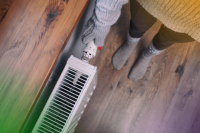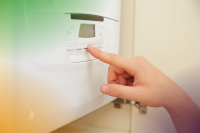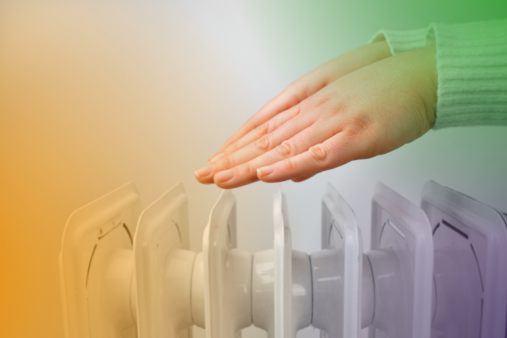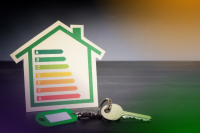Winter is fast approaching and it’s the time of year when we all start to think about keeping our homes cosy and warm. Fuel bills seem to rise year on year but are there things we could do to keep costs to a minimum? We’ve put together some of the smartest and most effective tips to help us all stay warmer through the colder months.
Switch energy supplier
NB: This information regarding switching energy supplier may not be accurate currently due to the energy crisis of 2022 / 2023. The current situation regarding switching energy supplier may be volatile and it is recommended that rather than taking any immediate action further research be carried out.
According to statistics, one of the easiest ways of saving £300 on average is to switch energy suppliers. It’s easier to do than ever. Look at comparison websites to get a rough idea of potential savings from each supplier active in your area. Most of the best deals are available for customers who are prepared to tie themselves in to a one or two year deal. Mark the calendar to remind you when it’s time to hunt around again for the best deal.
Get a thermostat
If, like the majority of UK homes, you have central heating, are you using a thermostat? Older boilers often only have two settings – off, or on full blast. Getting a thermostat fitted gives you more control over the temperature in your home. If you already have a thermostat, cutting the temperature in your house by just one degree could save upwards of £75 per year. Heating controls can also be fitted on each radiator to give even more flexibility over how warm each room is.
Think about appliances
If you’re in the market for a new fridge, freezer or any other appliance, then choosing energy efficient is the wise move. All appliances are rated on a scale of A to G for efficiency. Buying an appliance which is towards the top of the scale could save hundreds. This is especially the case with appliances which use a lot of energy, such as washing machines or tumble dryers.
Here is a list of common household appliances and their energy ratings in the UK:
-
Refrigerator: Energy rating ranges from A+++ (most efficient) to G (least efficient).
-
Freezer: Energy rating ranges from A+++ (most efficient) to G (least efficient).
-
Washing machine: Energy rating ranges from A+++ (most efficient) to D (least efficient).
-
Tumble dryer: Energy rating ranges from A+++ (most efficient) to D (least efficient).
-
Dishwasher: Energy rating ranges from A+++ (most efficient) to D (least efficient).
-
Oven: Energy rating ranges from A+++ (most efficient) to D (least efficient).
-
Hob: Energy rating ranges from A+++ (most efficient) to G (least efficient).
-
Kettle: There is no official energy rating system for kettles, but purchasing an energy-efficient model can save energy and money.
-
TV: Energy rating ranges from A+++ (most efficient) to G (least efficient).
-
Computer: Energy rating varies depending on the model and usage.
It's important to note that energy ratings can vary between models of the same appliance, so it's always a good idea to check the energy label when making a purchase. Additionally, choosing energy-efficient appliances can not only save you money on your energy bills but also reduce your carbon footprint and contribute to a more sustainable environment.
Insulation
Having proper insulation in your cavity walls and loft spaces can dramatically cut heat being lost from your home. Even if you’ve insulated in the past, the recommended depth of 270mm is less than in many lofts, so it’s worth adding more. Properly insulating your house could save up to £275 per year, so any investment in materials won’t take long to pay for itself. Upgrading your windows from single to double glazing can also help, but is a more expensive investment.
Here are some ways you can insulate your home:
-
Loft insulation: This involves installing insulation material in your loft to prevent heat loss through the roof. This is a cost-effective way to insulate your home, and it can save you money on your energy bills.
-
Cavity wall insulation: This involves filling the gap between the inner and outer walls with insulation material. This can reduce heat loss through the walls and make your home more energy-efficient.
-
Solid wall insulation: If you have solid walls, you can insulate them from the inside or outside with insulation material. This can be more expensive than cavity wall insulation, but it can provide significant energy savings.
-
Draught proofing: This involves sealing gaps around doors and windows to prevent cold air from entering your home. This can be a simple and inexpensive way to make your home more energy-efficient.
-
Double glazing: Installing double glazed windows can reduce heat loss through windows and make your home more energy-efficient. This can be more expensive than other insulation methods, but it can also provide other benefits such as noise reduction and increased security.
-
Floor insulation: If your home has suspended floors, you can insulate them by adding insulation material between the floor joists. This can reduce heat loss through the floor and make your home more comfortable.
-
Insulated doors: Installing insulated doors can prevent heat loss through the front and back doors of your home.
By insulating your home, you can reduce your energy consumption, save money on your energy bills, and make your home more comfortable.
Cut out draughts
Old-school draught proofing measures can also help you save around £30 to £50 per year on your heating bills. All those things which granny used to do such as hanging heavy curtains on the back of doors, having draught excluders and putting foam strips around windows can stop cold draughts getting into your home. If you have a chimney which you are not using for a fire, get a special inflatable device which can block off the chimney completely. Seal up loft hatches and consider remedies for other draughty areas like keyholes or your letterbox.
Reduce water usage
Conserving water can also save energy, as it takes energy to heat and pump water. Take shorter showers, fix any leaks, and install low-flow showerheads and taps.
Here is a summary of the main ways you can reduce water usage in your home:
-
Fix leaks: Even small leaks can waste a lot of water over time. Check your pipes and faucets regularly and fix any leaks promptly.
-
Install water-saving devices: Install low-flow showerheads, taps, and toilets that use less water without sacrificing performance.
-
Shorten shower time: Showers can use a lot of water, so try to limit your shower time to 5 minutes or less.
-
Use a bucket: When washing fruits and vegetables, use a bucket to catch the water and then use it to water plants or flush the toilet.
-
Only run full loads: When using the dishwasher or washing machine, make sure you run full loads to maximize water efficiency.
-
Water plants early or late in the day: Watering plants early in the morning or late in the day when the temperature is cooler reduces evaporation and water waste.
-
Collect rainwater: Collect rainwater in a barrel or tank to use for watering plants or cleaning.
-
Use a broom: Instead of using a hose to clean outdoor areas like driveways and patios, use a broom to save water.
By implementing these water-saving tips, you can reduce your water usage in the UK and save money on your water bills while helping to conserve this precious resource.
Wash clothes in cold water
Using cold water to wash your clothes can save energy and money, and it's better for your clothes too. Washing clothes in cold water can not only help with energy efficiencies but in addition there are other benefits too:
-
Saves energy: Washing clothes in cold water requires less energy compared to using hot water. This means you will reduce your energy consumption and save on your energy bills.
-
Preserves clothes: Washing clothes in hot water can cause them to shrink or fade over time. Cold water is gentler on clothes, helping them to last longer and stay looking new.
-
Environmental benefits: By using less energy, washing clothes in cold water reduces your carbon footprint and helps to conserve natural resources.
-
Less risk of colour bleeding: Cold water is less likely to cause colours to bleed or fade, so you can safely wash your coloured clothes without worrying about ruining them.
-
More versatile: Cold water is safe to use on all types of fabric, so you don't have to worry about separating clothes based on temperature settings.
Use energy efficient lightbulbs
Replace traditional light bulbs with energy-efficient LED bulbs, which use up to 90% less energy and last much longer. There are several benefits of using energy-efficient lightbulbs:
-
Lower energy costs: Energy-efficient bulbs use less electricity than traditional bulbs, which means lower energy bills for you.
-
Longer lifespan: Energy-efficient bulbs last longer than traditional bulbs, so you won't have to replace them as often, reducing both your costs and environmental impact.
-
Lower carbon emissions: By using less electricity, energy-efficient bulbs help to reduce carbon emissions, which is better for the environment.
-
Better light quality: Energy-efficient bulbs often provide better quality light than traditional bulbs, with options available for warm or cool lighting and different brightness levels.
-
Versatility: Energy-efficient bulbs come in a variety of shapes and sizes, so they can be used in any type of light fixture.








